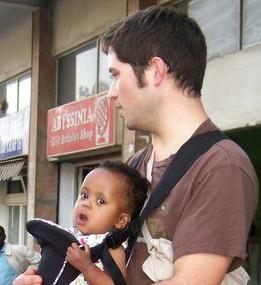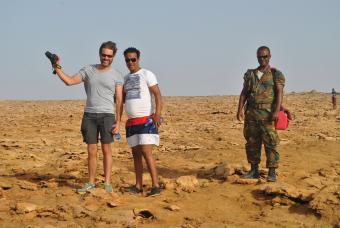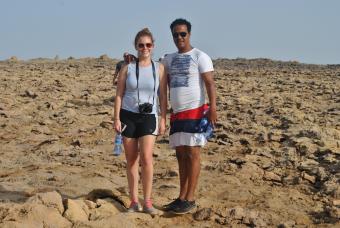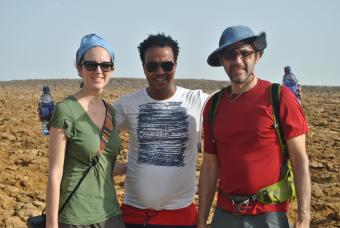-
Historic RouteAxum-Africa’s ancient city Some 365 kilo meters northeast of Gondar lies the town of Axum, Ethiopi...
-
NATURAL ROUTEEthiopia is the land of natural contrasts from the top of the rugged Semien Mountain to the depth of...
-
CULTURAL ROUTEThe Famous Tribes of Omo Valley in Southwestern Ethiopia Arbore Although relatively large, Arbore ...
-
ADDIS ABABAWith new modern architecture and an ancient history, Addis Ababa offers a rich cosmopolitan atmosphe...
-
AFAR AND THE DANAKIL DEPRESSIONWith more than 30 active and dormant volcanoes, the Danakil Depression is a geological marvel. In st...
-
TREKKING AND MOUNTAIN BIKINGTrekking in Simien Mountains Covering an area of 2200 km2 Bale Mountains National Park is the large...
-
WORLD HERITAGE SITESEthiopia’s immense cultural, paleontological and natural wealth is reflected in its tally of nine UN...
-
FESTIVALS AND HOLIDAYSGenna (Ethiopian Christmas) January 7 Genna is Ethiopian Christmas, and coincides with other Ortho...
-
ETHIOPIAN COFFEEAbyssinia, now Ethiopia, is the original home of the coffee (arabica) plant. Kaffa, the province in ...
-
LEARNING & EDUCATIONAL TRAVELEthiopia is a country of exceptional interest to educational and specialist groups. A tally of nine ...
-
FAUNA & FLORAEthiopia owes its rich biodiversity to the combination of a tropical location and an altitudinal spa...
-
TOYOTA MINIBUSWe have the Toyota Commuter as our 12-Seater Minibus for hire. With this minibus, you can travel in ...TOYOTA LAND CRUISER V8Toyota has also improved the Land Cruiser's already formidable off-road ability by adding a host of ...
-
Toyota CorollaThis one is different. For a start, it looks more solid and expensive than previous models, somethin...TOYOTA YARISToyota Yaris is a sensible choice, with affordable running costs, a strong reliability record, lots ...
With more than 30 active and dormant volcanoes, the Danakil Depression is a geological marvel. In stark contrast to the cool, temperate Ethiopian highlands, it is one of the lowest, driest, and hottest places on earth. It boasts records including the hottest average annual temperature (48º C/118º F in the dry season) and lowest point (155m/509 ft below sea level) on the African continent. But don’t let this deter you from visiting Danakil as the trip is full of adventure and surely one you will never forget.
The Danakil truly is one of the most unique geological areas on earth. A strange and mysterious landscape - scattered with noxious hot springs, frozen black-lava flows, and massive salt basins left over from ancient lakes – it is one of the most tectonically active places on the planet. Erta Ale, the region’s most-visited and active volcano, has maintained a permanent lava lake (one of 5 on the earth) for the past 120 years! If you are looking for an almost extra-terrestrial experience, the Danakil Depression is the place to come.
The Afar inhabitants – a nomadic people – lead camel caravans for hundreds of kilometers across the unfriendly landscape. They cut salt blocks from the dried lakebeds and sell them in towns far away. Although in the past they have demonstrated inhospitality and unwelcome to outsiders, in recent years they have recognized the benefits that tourism can bring and have accepted foreigners. For the intrepid traveler, the Afar region will surely be an unforgettable adventure.
**A trip to the Afar region should only be undertaken with proper planning and a knowledgeable guide. With an average annual temperature of 34-35º C, abundant supplies of water should be taken along. With a knowledgeable guide, up-to-date information from embassies in Addis Ababa, and a well-planned trip, a safe tour can be taken to the region.
With new modern architecture and an ancient history, Addis Ababa offers a rich cosmopolitan atmosphere. Ethiopia has often been called the original home of mankind due to the various fossil discoveries in the northeastern Afar region, but more recently scientists claim the land of what is now the city of Addis Ababa as the cradle of mankind.
In the 1870's, Menilik II moved ever southwards until he reached the Entoto mountain, where he set up a milltary camp. Strategically it was a strong position, but after some years Menilik II decided he no longer had any need for such an exposed position.
He moved a few kilometers down the southern slopes of Entoto Mountain to establish the present Ethiopian capital, which his wife Empress Taytu named Addis Ababa (New Flower). It was formally established in 1886.
Addis Ababa is currently a major hub for many local and international organizations, including the African Union, the United Nations branch office, the United Nations Economic Commission for Africa (ECA), the Africa Hall, and more than eighty foreign embassies and consultants.
One can also visit Merkato (the biggest open air market in Africa), Mount Entoto, the National Museum (where Lucy's remains rest), and many statues and monuments.
The city has a flourishing cultural life with regular exhibitions, lectures and opportunities for music and dance. Ethiopia also offers the wonderful culinary delights of injera, a large pancake-like crepe that forms the base of most Ethiopian meals, and tej, the distinctive Ethiopian traditional honey wine.
At an altitude of 2,500 meters, Addis Ababa is the 3rd highest capital city in the world after Lapaz and Quito in Latin America.
The Famous Tribes of Omo Valley in Southwestern Ethiopia
Arbore
Although relatively large, Arbore is far more rustic and unaffected than many similarly sized towns in South Omo. In common with their linguistically and culturally afflicted Tsemai neighbor, the Arbore migrated to their present homeland from Konso and the pastoralist of the surrounding lowland. The Arbore traditionally played an important role as a middleman in trade between the Omo River and the Konso highland. The town of the Arbore lies in an area covering several tribal boundaries. And because the Arbore people routinely intermarry with other ethnic groups, the tribe is also inhabited by a substantial number of Hamer and even Borena women, adding a cosmopolitan feel to the worthwhile Saturday market.
Mursi and Surma
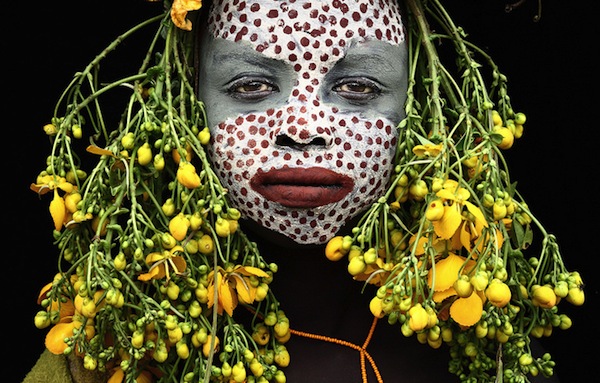 The Mursi live between their dry & wet season range on the Tama plains, north of Mago park in the Omo River region of southwestern Ethiopia. They care for livestock and plant some crops. The men practice light scarification on their shoulder after killing an enemy and shave geometric patterns on their head. During dance and ceremonies they adorn literally every part of their body with white chalk paint. Young unmarried men practice group stick fighting. The winner is carried on top of poles to girls waiting beside the arena, who decide among themselves which of them will ask his hand in marriage.
The Mursi live between their dry & wet season range on the Tama plains, north of Mago park in the Omo River region of southwestern Ethiopia. They care for livestock and plant some crops. The men practice light scarification on their shoulder after killing an enemy and shave geometric patterns on their head. During dance and ceremonies they adorn literally every part of their body with white chalk paint. Young unmarried men practice group stick fighting. The winner is carried on top of poles to girls waiting beside the arena, who decide among themselves which of them will ask his hand in marriage.
Karo
The Karo, which number only about 3,000 people, mainly live on the practice of flood retreat cultivation on the bank of the Omo River in southwestern Ethiopia. The Karo excel in face and body painting, practiced in preparation for their dances and ceremonies. They decorate their bodies, often imitating the spotted plumage of a guinea fowl. Feather plumes are inserted in there clay hair buns to complete the look.
The clay hair buns can take up to three days to construct and is usually re-made every three to six months. Their painted facemasks are spectacular. Karo women scarify their chest to beautify themselves. Scars are cut with a knife and ash is rubbed to produce a raised welt. Being the smallest tribe of the area, this group obviously struggles with direct threats from nearby tribes that have more gun power, greater number, and likely coalitions with one another.
Hamer
 The Hamers are pastoralists and number 30,000 people. They are known for their practices of body adornment and wearing a multitude of colorful beads. Women adorn their necks with heavy polished iron jewelry. Hamer society consists of a complex system of age groups. Moving from one age group to another involves complicated rituals. The most significant ceremony for young men is the "jumping of the bull" - the final test before passing in to the adulthood. Several days before the ceremony, the initiate passes out invitations in the form of dried knotted grass. The ceremony lasts three days. Late in the afternoon on the final day, ten to thirty bulls back and then run across the line of animals. At the end of the line, he turns back to repeat the performance in the opposite direction. He must make this unstable journey without falling. The Hamer men have a reputation of being less than adoring husbands. The women submit to the ritual flogging proudly and love to show the deep scars that are regarded as proof of devotion to their husbands.
The Hamers are pastoralists and number 30,000 people. They are known for their practices of body adornment and wearing a multitude of colorful beads. Women adorn their necks with heavy polished iron jewelry. Hamer society consists of a complex system of age groups. Moving from one age group to another involves complicated rituals. The most significant ceremony for young men is the "jumping of the bull" - the final test before passing in to the adulthood. Several days before the ceremony, the initiate passes out invitations in the form of dried knotted grass. The ceremony lasts three days. Late in the afternoon on the final day, ten to thirty bulls back and then run across the line of animals. At the end of the line, he turns back to repeat the performance in the opposite direction. He must make this unstable journey without falling. The Hamer men have a reputation of being less than adoring husbands. The women submit to the ritual flogging proudly and love to show the deep scars that are regarded as proof of devotion to their husbands.
Bumi
Also known as Nyangatom or the Bume, the Bumi live south of Omo National Park and occasionally migrate in to the lower regions of the park when water or grazing is scarce. Numbering around 6,000-7,000 in population, the Bumi are agro-pastoralists, relying on cattle herding and floor-retreat agriculture (consisting mainly of sorghum harvesting on the Omo and Kibish River). The Bumi tend to indulge in honey and frequently smoke out beehives in the park to get the honey inside the nest. The Bumi are known to be great warriors and quite frequently, active warmongers. They are often at war with the neighboring tribes including The Hamer, The Karo and The Surma tribes. A small group of Bumi living along the Omo River are specialized crocodile hunters who use harpoons from a dugout canoe. The elders of both sexes wear a lower lip plug. The men's is made from ivory and women's is made from copper filigree.
Bodi
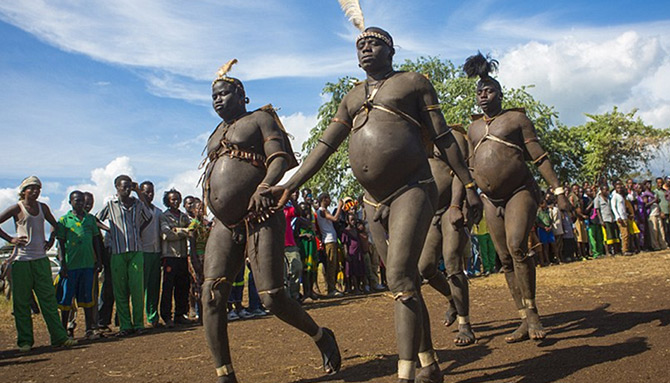 The Bodi are pastoralists living close the Omo River in southwestern Ethiopia. The Bodi are of Nile-Sahara stock and pastoral background. Although they do cultivate sorghum along the banks of the Omo River, their culture is very much cattle- centered. Similar to the Mursi, livestock plays an important role in marriage, divination, and name giving rituals. The Bodi classification of cattle is complex, with over eight words to denote different color and patterns. Bodi dress is simple. The women wear goatskins tied at the waist and shoulder, while men fasten a strip of cotton or bark-cloth around their waist.
The Bodi are pastoralists living close the Omo River in southwestern Ethiopia. The Bodi are of Nile-Sahara stock and pastoral background. Although they do cultivate sorghum along the banks of the Omo River, their culture is very much cattle- centered. Similar to the Mursi, livestock plays an important role in marriage, divination, and name giving rituals. The Bodi classification of cattle is complex, with over eight words to denote different color and patterns. Bodi dress is simple. The women wear goatskins tied at the waist and shoulder, while men fasten a strip of cotton or bark-cloth around their waist.
Ari
Ari women are famous for their pottery which they sell to support their families. The Ari people inhabit the northern border of Mago National Park in southwestern Ethiopia. Ari villages have neat compounds in fertile and scenic land with coffee plantations. They have large livestock herds and produce large quantities of honey. The women wear skirts from the banana-like tree, called Enset.
Dorze
Aside from dramatic view back to Rift Valley lakes near Arba Minch, ChenCha is of interest to the traveler as the home of the Dorze people. These people are renowned cotton weavers whose tall beehive-shaped dwelling are among the most distinctive traditional structures to be seen anywhere in Africa. The Dorze speak an Omotic tongue, similar to the languages of the lower Omo Valley. It is, above all, the unique Dorze houses that make ChenCha worth a diversion. These remarkable extended domes measure up to 6m tall (roughly the height of a two-story building), and are constructed entirely from organic material.
Konso
 The Konso inhabit an isolated region of basalt hills (essentially an extension of the southern highlands). Their land lies at an altitude range of roughly 1,500m to 2000m. They are flanked to the east by the semi-desert Borena Lowlands and to the west by the equally harsh lower Omo Valley. Mixed agriculturists, the Konso make the most of the hard, rocky slopes that characterize their relatively dry and infertile homeland through a combination of extensive rock terracing, the use of animal dung as fertilizer, crop rotation, and hard work. Traditionally, waga will be erected above the grave of any important Konso man or worriers, surrounded by smaller statues of his wife and defeated foes.
The Konso inhabit an isolated region of basalt hills (essentially an extension of the southern highlands). Their land lies at an altitude range of roughly 1,500m to 2000m. They are flanked to the east by the semi-desert Borena Lowlands and to the west by the equally harsh lower Omo Valley. Mixed agriculturists, the Konso make the most of the hard, rocky slopes that characterize their relatively dry and infertile homeland through a combination of extensive rock terracing, the use of animal dung as fertilizer, crop rotation, and hard work. Traditionally, waga will be erected above the grave of any important Konso man or worriers, surrounded by smaller statues of his wife and defeated foes.
Galeb
The Dasanech, alternatively known as the Galeb or Reshiat, range across a large territory following the western banks of the Omo River to Lake Turkana. Local oral tradition, reinforced by that of the Turkana, recounts that the Dasanech migrated to their current homeland from a region called Nyupe, to the west of Turkana, after being forced out by the expansionist wars of the Turkana in the late 18th century. Like the Turkana, Samburu and Gabbar of northern Kenya, the Dasanesh/Galeb were originally pure pastoralists, living an almost totally nomadic lifestyle. The abundant water frontage and fertile soil of their present territory has subsequently pushed them toward a more diverse subsistence economy, based around fishing and agriculture as well as herding livestock.
Ethiopia is the land of natural contrasts from the top of the rugged Semien Mountain to the depth of the Denakil Depression which, at 20m below sea level, is one of the lowest dry land points on earth. The Great Rift Valley is a remarkable region of volcanic lakes, with their famous collection of bird-life, great escarpments and stunning views for visitors.
On top of diverse and abundant vegetation, many of Ethiopia's natural parks are mentioned as some of the last remaining untouched wilderness of Africa. With 13 major reserves, Ethiopia provides a microcosm of the entire Sub-Saharan ecosystem. Bird life and indigenous animals from the rare Walia Ibex to the shy Wild Ass roam freely just as nature intended. Ethiopia, after the rains, is a land decorated with flowers and with many more natural plants than most countries in Africa.
The Bale Mountain National Park
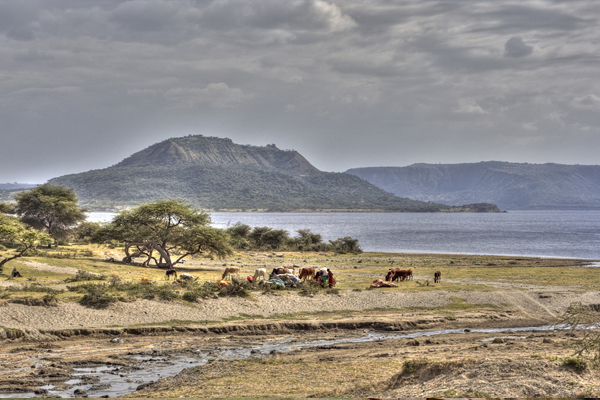 Covers an area of 2,470 square kilometer, contains Ethiopia's second highest peak, Mount Batu (4,304m). It is an area where one can either walk or drive, and is one of the best places to see the endemic Semien Red Fox, the Mountain Niyala and Menilik's Bushbuck. The park, with its branching mountain air, is ideal for hiking or climbing and horses are available for long or short rides in the mountains. The one and only road through the park gives motorists some breathtaking views.
Covers an area of 2,470 square kilometer, contains Ethiopia's second highest peak, Mount Batu (4,304m). It is an area where one can either walk or drive, and is one of the best places to see the endemic Semien Red Fox, the Mountain Niyala and Menilik's Bushbuck. The park, with its branching mountain air, is ideal for hiking or climbing and horses are available for long or short rides in the mountains. The one and only road through the park gives motorists some breathtaking views.
Not far from the Bale Mountains is one of the world's most spectacular and extensive underground caves: the Sof Omer cave system. Formed by the web river as it changed its course in the distant past and carved a new channel through limestone foothills, Sof Omar is an extraordinary natural phenomenon of breathtaking beauty.
The Semien Mountain massif is one of the major highlands of Africa rising to the highest point in Ethiopia, Ras Dejen(4620m). This is the fourth highest points where night temperatures often fall below zero.
The parks shelter the afro-alpine high mountains. Wildlife includes the Walia Ibex, Ethiopia wolf, Gelada baboon as well as klipspringer, augur buzzard; verreaux's eagle and falcon also soar above this mountain. The Semien escarpments are recorded by UNESCO (the world heritage site), and are often compared with the Grand Canyon in the USA.
Lake Abiyata
Two different lakes in one park, the two lakes are both terminal lakes and their beaches are unstable, saline, and both different in character. Abiyata is shallow at about 14m with a fluctuation of water level. The steam mouth is the source of relatively fresh water, much frequented by water bird for drinking and bathing. The Lake is surrounded by gentle, grass covered slopes and acacia woodland.
Lake Shala
By contrast, surrounded as it is by steep black cliffs and peaks that reflect in its water, is the deepest lake of the Rift Valley (260m). It is exceptionally beautiful, with shores that gives a scent of mystery with their hot sulfurous springs that bubble up and flow in to the lake.
There are over 400 bird species recorded here, almost half the number recorded for the whole country. Although the islands in Lake Shala are a real bird's paradise, the birds fly to Lake Abiyata to feed. Large numbers of flamingos gather here together with great white pelicans and a wide variety of other water birds.


















